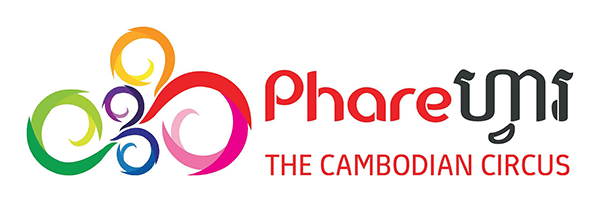Sampeah (in Khmer: សំពះ)is the Cambodian way to greet and has five different steps to show the respect to another person. In this article, we show you how to perform Sampeah.
Sampeah is either used when you want to greet (in Khmer: ជំរាបសួរ -> joom reab sour) somebody or when you want to say goodbye (in Khmer: ជំរាបលា -> joom reab lea). First of all, we need to place our both palms together like a lotus flower in front of our chest. Both are the formal way to greet and to say goodbye.
Five versions of Sampeah
First Sampeah:
When Cambodian greet their friends who have the same age, they place their both palms together at the chest level.
 Second Sampeah:
Second Sampeah:
When Cambodian greet their bosses, older person or higher ranking people, they place their both palms together at the mouth level.
 Third Sampeah:
Third Sampeah:
When Cambodian greet their parents, grandparents or teacher, they place their both palm together at the nose level.
 Fourth Sampeah:
Fourth Sampeah:
When Cambodian greet the king or monks, they place their both palm together at the eyebrows level.
 Fifth Sampeah:
Fifth Sampeah:
When Cambodian pray to the God or sacred statues, they place their both palm together at the forehead level.
Sampeah is an important part of the Khmer culture. It´s not only a form of greeting but also used to say thank you or apologize. Presenting Sampeah is a sign of respect and politeness and it is considered impolite not to return Sampeah.
Children explain Sampeah
A very nice video with Khmer children who explain the performing of Sampeah in English.
Sourm sva kum: Welcome
Sourm sva kum means welcome in Khmer language. You can listen here, how sourm sva kum is pronounced.

Affiliate*

Phare, the Cambodian Circus
A highlight in Siem Reap! Buy tickets online directly on the Circus Phare website*.
Links and references with a * are an affiliate link (advertising link). If you like Visit Angkor and buy, book or subscribe to something via an affiliate link, the provider will make a small commission for Visit Angkor. Of course, there are no additional costs for you.
Join our Facebook group
International travel group with friendly people who love Cambodia. We speak English, German and a little Khmer.
By the way: We write here at Visit Angkor with a lot of passion and love. Nevertheless, it can happen that information is no longer up to date or perhaps even incorrect. We would be happy to hear from you so that we can update the information accordingly. Thank you very much!









Yes you are right . We are Cambodian who have been in the poorest and suffering nationality since 1975 and since 1979 we were liberated from Polpot regime by Vietnam army and we ere so poor because economic embargo from the UN , Cambodia living with the war from 1970-1998 , just today we are peace now . so we are now not alone , so we have you are good friends who are coming to Cambodia for taking care of us and seeing our culture , custom , history ,world heritage sucha s Angkor Wat http://www.facebook.com/andycambodiaguide is alway with you and welcome , Your friends Cambodian
Are you familiar with the term pronounced “satuk”, which is an informal greeting along with sampeah?